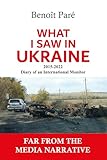The September 2024 extra-legal murder of Dr. Shahnawaz Kumbhar exposed the lethal combination of blasphemy charges with improper policing practises in Pakistan. The incident reveals both human rights challenges that blasphemy accusation victims face and questions the proper role of law enforcement agencies regarding justice and human rights protection.
Background of Dr. Shahnawaz Kumbhar
The district of Umerkot in Sindh now associates its entire symbol with Dr. Shahnawaz Kambhar who suffered brutal murder despite being a resident. Religious fanatics murdered a doctor who remained innocent to his killers. Dr. Shahnawaz Kambhar distinguished himself as a community healthcare worker who received credit for his social activities and charitable activities in the field. His mission included organising free medical programs throughout Umerkot alongside neighbouring rural communities that offered free medical care to all patients. Through his lifetime he devoted himself to enhancing his impoverished residential belt despite the fact that he could have amassed considerable wealth in Karachi like numerous medical professionals do. Through his ongoing healthcare mission he placed greater emphasis on achieving better public health results in his local area.
The Blasphemy Allegation and Subsequent Dismissal
Dr. Kumbhar encountered the ordeal after a local mosque cleric claimed to discover blasphemous content on his social media account. His swift removal from medical service at the civil hospital in Umerkot happened after the accusation was made. When a person in Pakistan faces blasphemy accusations their situation turns into a dangerous sequence that causes harsh legal consequences while society reacts with violent crowds and possible unlawful acts against the accused. The announcement of such allegations against someone becomes an immediate vehicle for both reputation destruction and personal security risks.
Extrajudicial Killing and Fabricated Encounter
Dr. Kumbhar received arrest after the complaint against him. Officials showed him a fair trial but ultimately murdered him during a fake police confrontation. The first police statements stated Dr. Kumbhar died during a gunbattle but investigations showed he stayed under police detention throughout and officials deliberately created the encounter to legitimise his killing. The discovery shows an alarming trend where security forces perform unauthorised killings in highly sensitive cases regarding blasphemy incidents.
Investigations and Legal Proceedings
A complete investigation by the Sindh Human Rights Commission (SHRC) exposed both legal violations and administrative failures following the incident. An extensive investigation started by the Chief Minister of Sindh caused him to suspend multiple high-ranked police officers involved in the case. The legal authorities filed 45 individuals to court with murder and terrorism charges and violations of the Torture and Custodial Death Prevention Act 2022 against Deputy Inspector General (DIG) Javed Jiskani and Superintendent of Police (SSP) Asad Chaudhry. The non-bailable arrest warrants did not prevent multiple accused officers from evading arrest which demonstrated existing legal system failures to enforce responsibility upon influential officials.
Exhumation and Forensic Findings
The authorities obtained Dr. Kumbhar’s body for thorough autopsy procedures after exhuming him to find out what had happened. The forensic examination proved beyond doubt that Dr. Kumbhar had suffered from torture which the first autopsy report had completely failed to detect. The contradictory findings of the autopsy led authorities to arrest Dr. Muntazar Leghari who conducted the first autopsy thus leading to his charges for doctoring medical evidence to hide misconduct. This case element shows how medical and legal systems allow collusive actions between professionals that cause justice to be delayed while maintaining conditions of absolute freedom from prosecution.
Role of Social Media and Mob Violence
Per the SHRC report social media played an important part in worsening the situation. Social media users spread inflammatory content along with false information which triggered widespread public anger leading to violent mob activities. The death of Dr. Kumbhar triggered an enraged mob to seize his body afterwards leading them to use fire to defile it and they tried to bury it without proper funeral rituals as police made insufficient attempts at intervention. The instant consequences of improper social media usage emerged in public perception while demonstrating how dangerous such behaviour can be in delicate situations.
Wider Implications and Call for Reform
The medical professional’s case corresponds to a fundamental issue in the way Pakistan manages blasphemy charges. Multiple incidents registered by the Centre for Justice indicate how accusations of blasphemy have resulted in mistrials of justice that often end with extralegal killings. The established patterns demonstrate that it is essential to create thorough legal reforms that defend the basic rights of citizens and stop blasphemy law misuse.
Conclusion
The unlawful death of Dr. Shahnawaz Kumbhar provides evidence about the dangers facing people accused of blasphemy in Pakistan. Both current legal codes and law enforcement practices need to be evaluated immediately in order to make significant adjustments that will protect individual rights and uphold the rule of law.The absence of reform measures will allow violent and unjust practises to continue which will simultaneously endanger the rule of law and damage state institution credibility.










